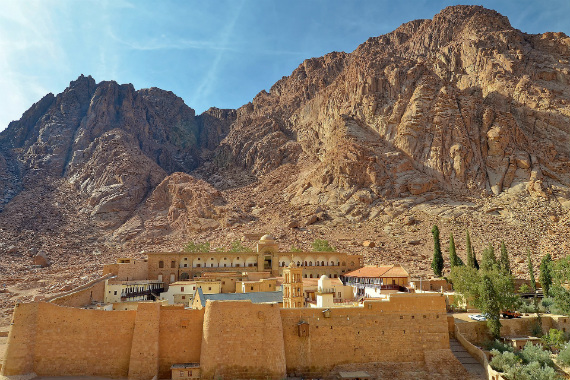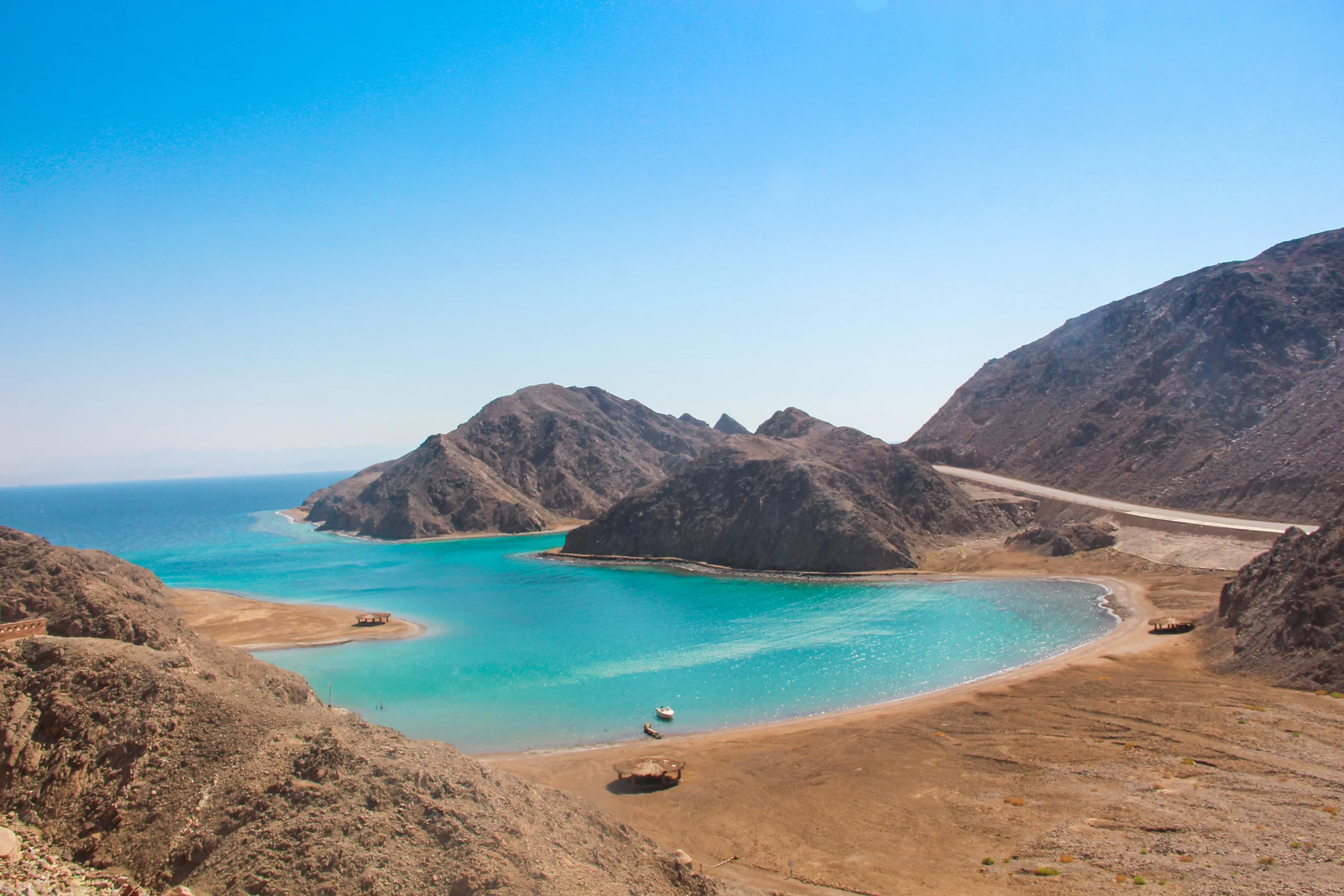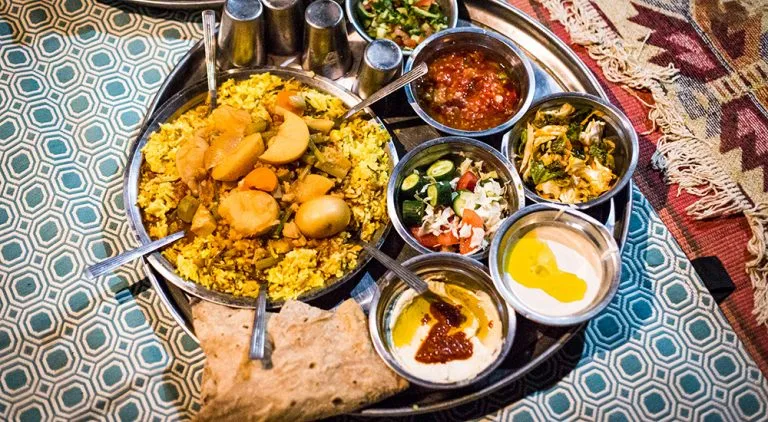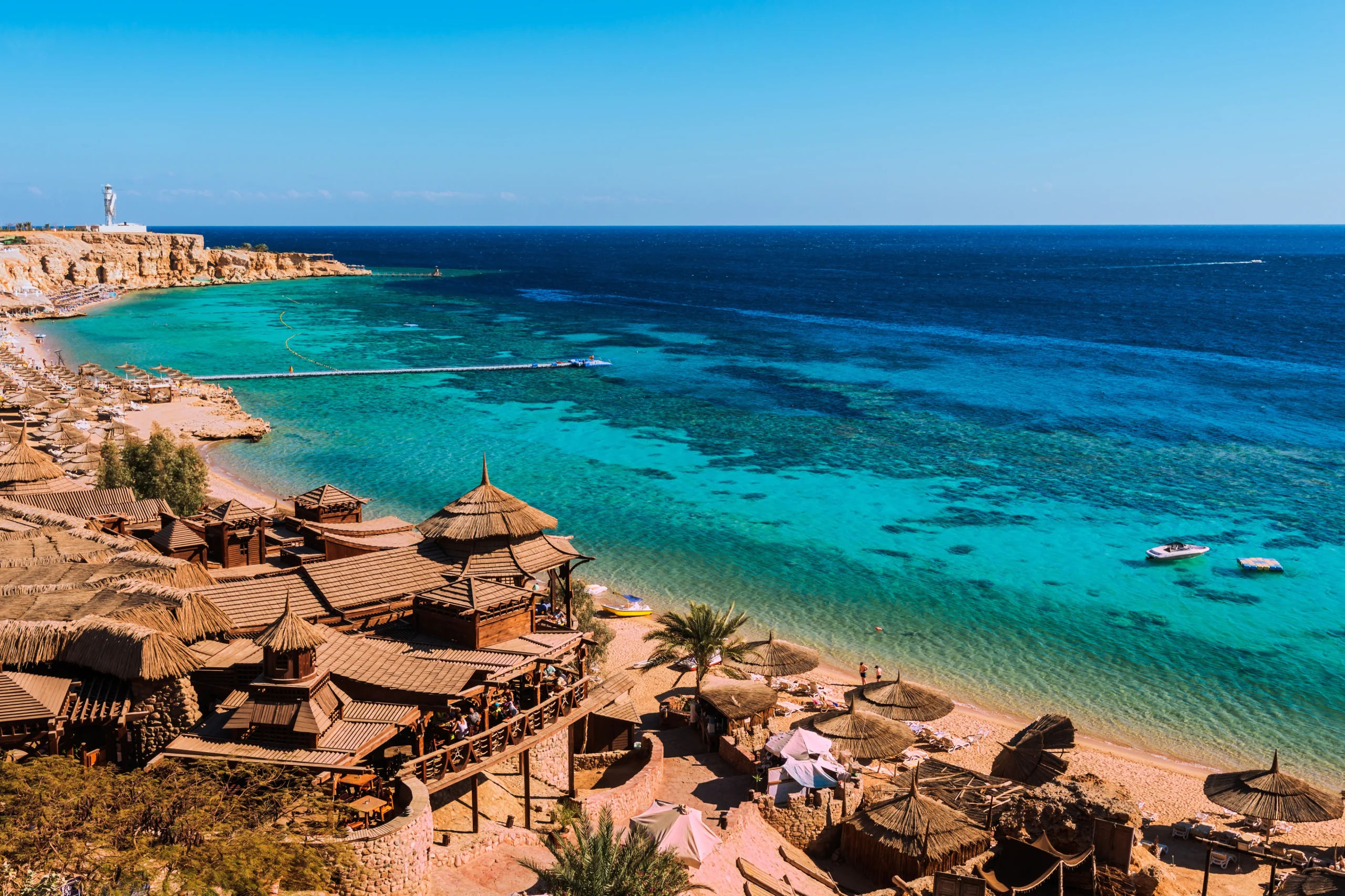South Sinai is a picturesque governorate in Egypt, located at the southern tip of the Sinai Peninsula, bordered by the Gulf of Suez and the Gulf of Aqaba. Renowned for its stunning landscapes, the region features a desert climate with hot summers and mild winters. Its major cities, like Sharm El Sheikh, Dahab, and Nuweiba, are famous tourist destinations, offering beautiful beaches, vibrant nightlife, and diving and water sports opportunities. Saint Catherine, another key area, owns the historic Saint Catherine’s Monastery, making it important for religious tourism.
The cultural richness of South Sinai is improved by the presence of many Bedouin tribes, whose traditional crafts, music, and hospitality add to the region’s allure. Adventure seekers flock to the area for hiking, camel riding, and snorkeling in protected marine reserves. With tourism being the backbone of its economy, South Sinai not only captivates visitors with its natural beauty and archaeological sites but also offers a unique glimpse into the heritage and lifestyle of the local communities.
Table of Contents
ToggleThe History of South Sinai
The history of South Sinai is rich and diverse, shaped by its geographical significance and cultural heritage. The area has been inhabited since ancient times, serving as a critical crossroads for various civilizations, including the Egyptians, Hebrews, and later, various empires.
Ancient and Biblical Significance
In ancient Egypt, South Sinai was known primarily for its copper mines and was a crucial trade and resource extraction area. The area is closely linked to biblical narratives, particularly the story of Moses receiving the Ten Commandments at Mount Sinai, traditionally identified with Jebel Musa in the region. This connection has made South Sinai a significant pilgrimage site for Jews, Christians, and Muslims.
Byzantine to Islamic Period
During the Byzantine period, the area became a hub for early Christian monasticism, with the establishment of Saint Catherine’s Monastery in the 6th century. It is one of the oldest Christian monasteries in operation and houses a rich collection of manuscripts and icons. Following the Islamic conquest of Egypt in the 7th century, the region continued to be important, serving as a retreat for scholars and religious figures.
Modern History
In the modern era, South Sinai’s significance grew with the rise of tourism in the late 20th century, particularly after the peace treaty between Egypt and Israel in 1979, which led to the reopening of Sinai to tourists. The development of Sharm El Sheikh and other resort towns transformed the economy and social structure of the region. Today, South Sinai is famous for its marvelous landscapes and rich history, and it is a vibrant tourist destination while retaining factors of its ancient heritage.
Overall, South Sinai’s history is a tapestry of ancient traditions, religious significance, and modern development, making it an exceptional and culturally rich region in Egypt.
Tourist Attractions
Sharm El Sheikh
Sharm El Sheikh is a famous resort town on Egypt’s southern tip of the Sinai Peninsula. Often referred to as the “City of Peace,” it has become one of the country’s most famous tourist destinations due to its scenic beaches, lively marine life, and multiple recreational activities.
Tourism and Activities
Sharm El Sheikh is famous for its exceptional diving and snorkeling opportunities, with world-class sites like Ras Mohammed National Park and the Tiran Islands. The clear, warm waters are home to diverse coral reefs and abundant marine species, attracting amateur and professional divers. In addition to water sports, visitors can enjoy activities such as desert safaris, camel riding, and hiking in the surrounding mountains.
Culture and Infrastructure
The town boasts multiple accommodations, from luxury resorts to budget hotels, serving various travelers. The Naama Bay area is particularly popular for its lively promenade with restaurants, shops, and nightlife. Sharm El Sheikh also hosts many international conferences and events, further promoting its reputation as a global tourist and business hub.
Dahab
Dahab is a charming coastal town on the southeastern Sinai Peninsula in Egypt. It is famous for its laid-back atmosphere and scenic natural beauty. Once a small Bedouin fishing village, Dahab has become a famous destination for backpackers, divers, and travelers seeking a more relaxed alternative to bustling resort towns like Sharm El Sheikh.
Attractions and Activities
Dahab is famous for its exceptional diving and snorkeling opportunities, particularly at famous sites like the Blue Hole, a world-famous diving spot famous for its deep underwater sinkhole and lively coral reefs. The town offers a variety of water sports, including windsurfing and kitesurfing, thanks to its favorable winds and clear waters. In addition to aquatic activities, visitors can see the surrounding desert landscapes through camel treks, quad biking, or hiking in the nearby Sinai Mountains, including trips to the notable Mount Sinai.
Culture and Community
Dahab’s chilling, bohemian vibe sets it apart, attracting a community of travelers, artists, and adventurers. The town features a range of accommodations, from budget hostels to boutique hotels, and is dotted with cozy cafes and restaurants serving a mixture of local and international cuisine. The beachfront promenade is perfect for strolls, while regional markets offer a chance to experience traditional Bedouin culture and crafts.
Food in South Sinai
The food in South Sinai reflects a delightful blend of Bedouin, Egyptian, and Mediterranean influences, characterized by fresh ingredients, bold flavors, and traditional cooking methods. Here are some essential highlights of the culinary scene in this region:
Traditional Bedouin Cuisine
Bedouin cuisine is a significant part of South Sinai’s food culture. Dishes often feature staple ingredients like rice, bread, lamb, or chicken. Mansaf, a traditional dish made with rice, lamb, and yogurt sauce, is popular among Bedouin communities. Another typical dish is Mujadara, which consists of lentils and rice topped with caramelized onions, giving a hearty and nutritious option.
Seafood and Mediterranean Influences
Given its coastal location, seafood plays a prominent role in the diet of South Sinai residents. Freshly caught fish, octopus, and shrimp are commonly grilled or prepared in flavorful sauces. Sayadeya, a fish and rice dish seasoned with spices and herbs, is a local favorite. The Mediterranean influence is also proof in dishes like grilled vegetables, hummus, and tabbouleh, often served as appetizers or side dishes.
Street Food and Snacks
Street food is also an essential factor of the food culture in South Sinai. Vendors offer various snacks, like falafel (fried chickpea balls), koshari (a mixed dish of rice, lentils, pasta, and tomato sauce), and shawarma (spiced meat wrapped in pita bread). These dishes are delicious and provide a quick and affordable way for locals and visitors to enjoy traditional flavors.
Sweet Treats and Beverages
For dessert, traditional sweets like baklava and kunafa (a pastry made with thin noodle-like dough soaked in syrup) are famous. They are often enjoyed with a cup of strong Egyptian tea or ahwa (Turkish coffee). Fresh fruit is also abundant in the area, with options like dates, figs, and pomegranates commonly available.
In summary, the food in South Sinai offers a rich tapestry of flavors and traditions, making it an integral part of the region’s cultural experience. Whether eating in local restaurants or sampling street food, visitors will surely enjoy this beautiful area’s delicious and diverse culinary offerings.
Frequently Asked Questions
What are the top must-visit in South Sinai?
South Sinai is a captivating destination for its scenic natural beauty, rich cultural heritage, and adventure opportunities. Sharm El Sheikh stands out with its spectacular beaches, luxury hotels, and dynamic nightlife, offering activities like diving and snorkeling in its coral reefs. Ras Mohammed National Park is popular for its underwater life, while Dahab, a laid-back town, attracts visitors with spots like the Blue Hole for diving and a relaxed atmosphere.
Why does South Sinai have historical importance?
Mount Sinai holds religious and historical significance, is believed to be where Moses received the Ten Commandments, and features the historic Saint Catherine’s Monastery. With its beautiful beaches, Nuweiba serves as a base for discovering the scenic Colored Canyon. Tiran Island is perfect for snorkeling and diving, while the Blue Hole offers special underwater experiences. Lastly, visiting a Bedouin camp provides a taste of local culture, traditional food, and desert adventures. South Sinai is truly a treasure trove of natural wonders and cultural experiences.
How good is the Bedouin food?
Bedouin food is famous for its rich flavors, wholesome ingredients, and traditional cooking ways. It is characterized by simplicity and often features staples like rice, lamb, and vegetables seasoned with cumin and coriander. Dishes like Mansaf (rice and lamb with yogurt sauce) and Mujadara (lentils and rice with caramelized onions) highlight the cuisine’s heartiness.
Is South Sinai a perfect tourist destination?
Yes, South Sinai is often considered an ideal tourist destination due to its exceptional blend of marvelous landscapes, rich history, and diverse recreational activities. The region’s breathtaking natural beauty includes pristine beaches, dramatic mountains, and vibrant coral reefs, making it ideal for outdoor enthusiasts and nature lovers.
Sharm El Sheikh, Dahab, and Nuweiba have various accommodations, from luxury resorts to budget-friendly options meeting different types of travelers. The region is famous for its perfect diving and snorkeling chances , especially in sites like Ras Mohammed National Park and the Blue Hole, attracting underwater adventurers from around the globe.
